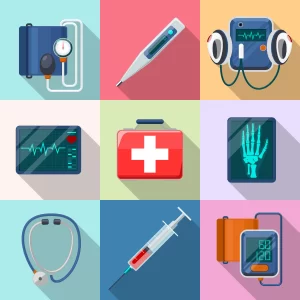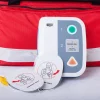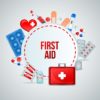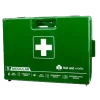
Recent Post
 Could You Recognise the Signs That Someone Needs a Defibrillator?
Could You Recognise the Signs That Someone Needs a Defibrillator?
September 12, 2023
Heart disease: it’s a well-known culprit across the globe, and Australia is no stranger to it. Heart diseases continue to be among the top reasons for mortality in the country. Yet, there’s a vital lifeline that not everyone is aware of – defibrillators. Now, let’s delve into the life-saving role of these devices in a cardiac emergency.
What is a Defibrillator and How Does it Work?
A defibrillator might sound like something from a sci-fi movie, but it’s an everyday hero in the medical world. In essence, it’s a device that sends an electric shock to the heart to restore its normal rhythm, especially during life-threatening situations like sudden cardiac arrest.
Defibrillators use state-of-the-art technology. They detect irregular heart rhythms and deliver precisely calibrated electric shocks to correct them. The shocking truth? There are different types of defibrillators: Automated External Defibrillators (AEDs), implantable, and wearable defibrillators. They all follow the same principle but serve different needs and circumstances.
The Importance of Defibrillators in Cardiac Emergencies
In a cardiac emergency, every second counts. And that’s where a defibrillator comes into play. It’s like having a personal superhero on standby, ready to jump into action when your heart goes offbeat.
You see, during a sudden cardiac arrest, the heart starts beating erratically or stops beating altogether. This means oxygenated blood doesn’t get to vital organs, including the brain. Without swift action, the person can die within minutes.
But here’s the game-changer: a defibrillator. By delivering a therapeutic dose of electrical energy to the heart, it can restart the heart or restore the normal rhythm. The timely use of a defibrillator, quite literally, brings people back from the brink.
Current Defibrillator Access and Usage in Australia
Down under, defibrillator access and usage are areas where we need to step up. While some public places like airports or sports centres have AEDs, many don’t. This lack of access could be the difference between life and death in a cardiac emergency.
Current policies and regulations in Australia support the use of defibrillators by trained individuals. But we need to push for more widespread availability, don’t you think? We’re talking about public access defibrillators in workplaces, schools, shopping centres, and even residential areas.
How to Use a Defibrillator in a Cardiac Emergency
Let’s paint a picture: You’re in a public place, and someone collapses. Do you know what to do? Here’s a step-by-step guide on how to use an AED:
- Call for help: Dial 000 immediately, the Australian emergency number.
- Start CPR: Do chest compressions and rescue breaths while someone fetches the AED.
- Set up the AED: Turn it on and follow the voice prompts.
- Attach pads: Expose the person’s chest and attach the adhesive pads.
- Stand clear: Let the AED analyse the person’s heart rhythm.
- Deliver the shock: If advised by the AED, press the shock button.
Continue with CPR until medical help arrives. Remember, swift action can save a life.
Training for Using a Defibrillator in Australia
Now you might be thinking, “That sounds complex. Can I even use a defibrillator?” The answer is a resounding “yes.” While the device does seem intimidating, the truth is that it’s designed to be used by anyone – medical degree or not.
In Australia, many organizations offer defibrillator training as part of their First Aid courses. It’s time well spent – you never know when you might need to step in and save a life.
The Future of Defibrillators and Heart Health in Australia
Looking ahead, defibrillators are set to play an even more critical role in heart health in Australia. There’s ongoing research into making defibrillators more efficient, portable, and user-friendly. We can also look forward to more robust policies on defibrillator access and training.
In conclusion, awareness of heart health and the life-saving role of defibrillators can’t be overstated. After all, it’s not just about living longer, but also living better, healthier lives. So, let’s make every heartbeat count!
Q: What type of defibrillators does Priority First Aid offer?
A: Priority First Aid offers a wide range of defibrillators to suit various needs and circumstances. This includes Automated External Defibrillators (AEDs) suitable for use in public spaces, businesses, and homes. Our range includes trusted brands such as Defibtech, Heartsine, and Lifepak.
Q: Why should I choose a defibrillator from Priority First Aid?
A: At Priority First Aid, we are dedicated to providing high-quality defibrillators that are easy to use, even for those without medical training. We aim to equip as many Australians as possible with the tools needed to respond to a cardiac emergency effectively. Our defibrillators come with step-by-step voice prompts to guide users through the process, making them suitable for any potential emergency responder.
Q: How can Priority First Aid help with my AED program management?
A: Priority First Aid offers an AED Program Management Service. We assist in ensuring your defibrillator is always rescue-ready. The service includes regular maintenance checks, replacement of expiring parts, compliance management, and ongoing support. Our goal is to keep your AED in optimal working condition and your team prepared for an emergency.
Q: Can Priority First Aid provide training on how to use a defibrillator?
A: Absolutely. At Priority First Aid, we believe in the importance of being prepared for a cardiac emergency. Therefore, we offer comprehensive training courses on how to use a defibrillator effectively and confidently. Our courses are designed to be understandable and engaging, making it easy for anyone to learn these lifesaving skills.






